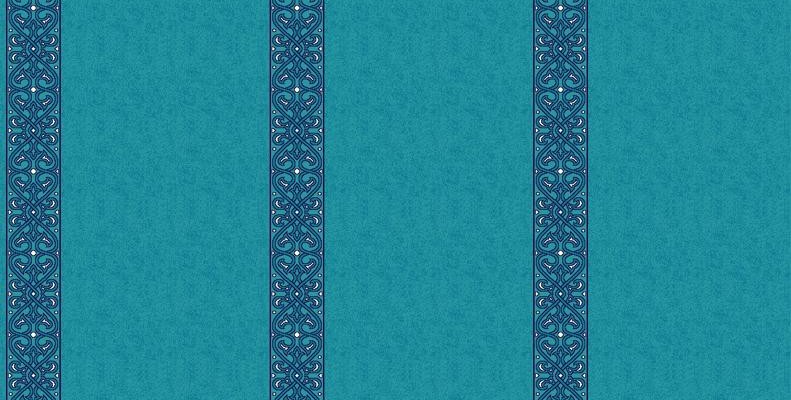
Life with Wool
HEALTHY, COMFORTABLE AND SAFE ENVIRONMENTS
Wool - innovative, versatile and durable. A perfect blend of natural performance, strength and comfort, wool is the ideal choice for interiors of homes, offices, hotels, hospitals and other public spaces.
Wool fabrics can withstand years of daily wear and tear, making them the perfect choice for upholstery, carpets, floor coverings, curtains and interior products such as sleepwear, blankets, cushions and sofa covers.
THE REASON WHY WOOL PREVAILS
Wool is 100 per cent natural, biodegradable and renewable. It is made from a combination of sheep, sunlight, water and grass. Its fibres are extremely durable over many years of active life. It is biodegradable when discarded. It also consists of planet-friendly, renewable fibres.
The wool that grows on sheep can be sheared annually. For today's consumers, who are becoming increasingly sensitive to the environmental aspects of products, wool is extremely important for responsible consumption.
CARPET Human anatomy is designed for walking on soft ground. Each wool fibre has a three-dimensional helical a-helix that gives it a natural elasticity. This elasticity means that the wool fibre can stretch up to 30% more than its original length and return to its original shape. Wool rights therefore increase comfort when walking and also help to smooth out marks caused by furniture.
BEDDING: Wool is naturally breathable, making it a very effective thermoregulator and resistant to moisture. The natural elasticity of wool means that it stretches before softly returning to its natural shape, with a slight sagging when used. Therefore, using wool when sleeping gives an extra sense of comfort.
INSULATION: Sound reverberation can be a major factor affecting the habitability and long-term health of interior spaces. Sound absorbing surfaces such as curtains and wall coverings can significantly remove the problem from the room. Furthermore, wool interior textiles and insulation products offer an inherent flame resistance and a unique moisture management capacity.
BENEFITS
Luxury & comfort: Wool is naturally the perfect blend of strength and softness that makes us feel safe, secure and comfortable. An advanced fibre, wool warms you when you are cold and cools you when you sweat.
Ability to preserve its appearance: Thanks to the strength and durability of the fibre, wool interior products retain their "new" appearance for longer periods of time. Upholstery fabrics and carpets with a high wool content have the ability to bounce back even after the hardest wear and tear, and their anti-static properties mean they attract less dust and dirt particles.
Moisture absorption: Buildings can contain large amounts of vapour. High humidity provides perfect living conditions for bacteria, fungi and dust mites. Wool has the highest recovery of any popular textile, absorbing 33 per cent of its dry weight without feeling wet.
Safe: The inherent chemical structure of wool makes it naturally resistant to flame. Compared to most textiles, wool is less likely to burn. While cotton catches fire at 255°C, the temperature must reach 570- 600°C for wool to ignite. If wool does not ignite, it tends to self-extinguish due to its high level of nitrogen, an element widely used as a fire retardant. While polyester melts at 252-292'C and nylon melts at even lower temperatures of 160-260°C, wool never melts, so it does not stick to the skin like many common synthetics, reducing significant medical complications for burn victims.
Healthy: Improves the ambient air. Research at the DWI (Deutsches Wollforschungsinstitut) in Germany has shown that molecules from pollutants such as formaldehyde, ozone, nitrogen oxides and sulphur dioxide are chemically bound by wool. This also applies to odours.
Insulation: Wool is a fine and crimped fibre; it contains plenty of air pockets and therefore provides better insulation. Rooms decorated in wool materials reduce heating costs, making insulation with wool natural and safe.
Acoustics: Wool is one of the most effective acoustic building materials. Its natural folds retain air, providing optimum sound insulation. Wool carpets, for example, prevent sounds such as the sound of walking and reduce sound emission from other noise sources by up to 80 per cent.
Ease of maintenance: Wool fibres have a natural resistance to stains thanks to a very thin, waxy top layer attached to the surface. This surface-bound layer cannot be easily removed by washing or various processes. It provides the necessary time for spilled liquids to be wiped off the wool fabric before they cause permanent stains.
WOOL
NATURAL
Wool is a completely natural fibre that grows year-round on sheep that consume only air, sunlight and grass.
BIODEGRADABLE
Unlike most man-made fibres, wool fibre dissolves spontaneously in the soil within a few years when discarded.
RENEWABLE
Sheep produce a new fleece every year, making wool a completely renewable source of fibre.
BENEFITS OF WOOL
- Hard wearing and long lasting
- Maintains its fluffy shape and height
- Traces caused by furniture quickly disappear
- Resistant to permanent marks
- Absorbs and eliminates many harmful odours (indoor pollution) from
- the air
- Resistant to flame
- Reduces statics
- Provides natural heat and sound insulation
- Regulates the moisture content in the air
- Reduces dust in the air
